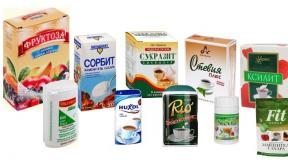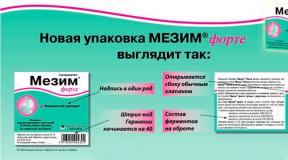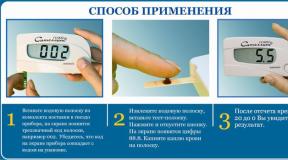Synthomycin ointment - clear instructions, price. What is synthomycin ointment used for? Synthomycin ointment how to apply
Find out what synthomycin ointment helps with.
This medicine is antibacterial, fights infectious and inflammatory diseases.
This is a budget and effective medicine.
Is there any problem? Enter in the form "Symptom" or "Name of the disease" press Enter and you will find out all the treatment of this problem or disease.
The site provides background information. Adequate diagnosis and treatment of the disease is possible under the supervision of a conscientious physician. All drugs have contraindications. You need to consult a specialist, as well as a detailed study of the instructions! .
What helps
The ointment composition has a positive and energetic effect on a number of gram-positive and gram-negative bacteria and microorganisms:
- Streptococcus;
- Staphylococcus;
- Gonorrhea;
- shigella;
- Neisseria.
The tool is used for therapeutic and prophylactic purposes. It has anti-inflammatory and analgesic properties.

From what this ointment helps according to the instructions:
- Acne rashes;
- Purulent lesions of the skin;
- Furuncles;
- Trophic ulcers;
- burns;
- Sycosis;
- Hydradenitis;
- Cracked nipples (in breastfeeding mothers).
Synthomycin is used to treat gynecological diseases and hemorrhoids.
Instructions for use of the ointment
Synthomycin ointment is intended for external use.
Before starting treatment with the drug, you need to familiarize yourself with some rules:
- Before applying the ointment, the affected skin must be pre-cleansed with warm water and soap.
- Do not use the product longer than the prescribed period (the duration is indicated in the instructions).
- Observe the time of application of the next doses of the medication.
- If after ten days of using the drug there is no improvement, you will need to consult a doctor.
Correct application of the emulsion:
Apply the product to the lesions, put a gauze bandage or bandages on top. Place parchment paper in the middle of the bandage. Actions will prevent the impregnation of the compress. The bandage is changed at least 2 times a day. The course of treatment is 7-10 days.

If women in labor have cracked nipples, they are initially treated with ammonia (0.25%), then a layer of emulsion is applied using a sterile napkin. The duration of treatment is one week.
Composition and healing properties
Synthomycin liniment is predominantly white in color with a yellow tint and a different smell.
Ingredients of the ointment:
- Chloramphenicol is the strongest antibacterial substance. Its action is aimed at disrupting the synthesis of proteins in cells. All harmful microorganisms die.
- Castor oil is able to heal and soften the skin, relieve inflammation, redness. Removes dark spots from skin layers. It has an antibacterial effect on lesions, prevents drying and peeling of the skin.
- The consistency and properties of the drug are preserved thanks to distilled water, preservatives and emulsifiers.
The properties of the synthomycin emulsion actively affect various infections that penicillin and tetracycline antibiotics cannot cope with.
The concentration of the agent is 1%, 5%, 10%, it depends on the amount of antibiotic content.
The advantages of the drug include high efficiency, tangible and fast result of treatment, low price.
Contraindications and side effects
Synthomycin liniment should not be used:
- Pregnant women;
- When breastfeeding;
- Children under 2 years old;
- In violation of blood flow;
- With eczema;
- People suffering from kidney pathologies;
- With skin lesions with fungal infections;
- With individual intolerance to the elements present in the ointment composition.
Side effects include:
- allergic reaction;
- Rash on the skin;
- Repeated fungal infection of the skin layers;
- Diarrhea;
- Gag reflexes;
- Hematomas (subcutaneous);
- Opening bleeding.
To side effects did not appear, check the susceptibility of the microflora to the components of the drug.
Video
The use of ointment in gynecology
Synthomycin emulsion is used in gynecology.
Why is it prescribed in gynecology:
- Vaginitis and various bacterial infectious lesions of the vagina;
- erosion of the cervix;
- Trichomonas colpitis;
- gonorrheal urethritis;
- inflammation urinary system.
The medication is prescribed by a gynecologist. It is strictly forbidden to apply liniment independently.
With erosion and colpitis, tampons with ointment (10%) are introduced vaginally, which at first change every six hours. After 3 days, this procedure is carried out once a day. The course of treatment is fourteen days.
Repeated therapy is done after a week of rest. Synthomycin injections are used in combination with tampons, the daily dose is 0.5 grams, 3 times a day.
Using synthomycin liniment in diseases of the urinary system, an improvement is quickly observed. general condition sick. The tool helps to reduce temperature, reduce swelling, improve diuresis.
After using tampons with this drug, you need to undergo a course of treatment with special vaginal synthomycin suppositories. They are used in the field of gynecology. They treat inflammation of the cervix, cystitis and prevent the development of pyogenic microflora.
Before using the ointment composition, it is necessary to be examined so that the doctor can determine the causes of the disease. Since this drug is not in force to overcome fungal infectious diseases. No one doubts the effectiveness of the ointment composition.
Most doctors are seriously concerned about the uniqueness of the drug. Its ability to quickly penetrate the placenta.
Doctors advise to refrain from using the medication for pregnant and lactating women. Since its pharmacological capabilities have not been fully explored.
Application for skin diseases
Universal ointment is able to overcome about forty different diseases. It is used to treat non-purulent wounds that are in the healing stage. Consider the most common skin diseases under which it is assigned.
Fight against skin diseases
The tool is actively used in the treatment of subcutaneous mites - demodicosis. The tick is introduced into the skin layers and feeds on subcutaneous fat deposits.
The ointment is applied to the affected areas of the body, blocks the access of air, preventing the tick from eating. Due to the antibiotic substances contained in the ointment, skin wounds quickly heal and dry out.
For herpes zoster ( viral disease) you need to apply a synthomycin preparation. Its antimicrobial elements will prevent re-infection in areas where viral vesicles have formed. 
The drug is prescribed by doctors for furunculosis. After removing the boil, the ointment is applied to a gauze bandage, and applied to the affected areas of the skin. Rubbing the drug is not recommended.
Young children and the elderly are often exposed to impetigo. The defeat of the skin layers occurs as a result of non-compliance with simple rules of personal hygiene.
Initially, diseased areas are treated with a weak antiseptic solution. A bandage or gauze with applied ointment is applied. The course of treatment is at least 10 days.
Get rid of acne on the face
Synthomycin is actively fighting acne. Initially, you will need to cleanse the skin with soap and warm water. Wipe your face dry and apply the product on each pimple with a dotted motion.
Lubrication should be carried out over the entire affected surface (even if the rashes occupy a large part). If the wounds are open, you can not use the ointment.
For the best effect and lack of addiction, alternate the ointment with other creams or preparations. Before using the medication, read the instructions, follow all the rules and dosages.
The composition of the emulsion contains the strongest antibiotic. It is important to use it correctly so as not to disrupt the hydro-lipid balance of the skin layers. Dry skin, increased sensitivity and other serious disorders may follow.
Appointment for pathologies of ENT organs
For various ENT pathologies, doctors use an ointment with synthomycin. Let's take a closer look at diseases and treatment.
Boils near the nose occur as a result of injuries that the patient inflicts on his own (with a finger). In particular, such pathologies can be observed in people who are prone to furunculosis. The furuncle causes severe pain, radiating to the temples, to the area of \u200b\u200bthe teeth and eyes.
The skin on the tip of the nose swells, tenses. Sometimes there is an increase in body temperature.
You do not need to remove boils on your own to prevent the spread of infections through the vessels into the cranial cavity.
Furunculosis is treated with synthomycin 10% ointment, which is placed in the nose with gauze turunda, previously moistened in a solution of drilling fluid. Apply the drug 4-5 times a day.
With frontitis, they become inflamed frontal sinuses. An accurate diagnosis can only be made by a specialist. He examines and punctures the upper sinus with a needle to determine the degree of darkening and the nature of the component.
Treatment is with drops, powders and synthomycin liniment. After washing the sinuses, are introduced effective antibiotics. Then the gauze is twisted into a thin strip, on which a synthomycin emulsion is applied. The composition is placed in the nose for 15 minutes. The course of treatment is 20 days.
If the presented procedure did not bring a visible result, then surgical intervention may be required.
As a result of a prolonged runny nose, complicated by influenza, measles, sinusitis can form. Sometimes its appearance is provoked by diseased roots of the last upper teeth.
The doctor prescribes treatment using a synthomycin agent. The drug helps to narrow the vessels of the nose, reduce swelling of the mucosa, alleviate respiratory tract.
The ointment is applied to the nasal mucosa, in the form of small swabs. Carry out the procedure no more than 3 times a day, for seven days.
Ointment treatment for eye inflammation
Synthomycin is actively used in eye diseases that are associated with inflammatory processes of the mucous membranes. Consider the common forms of diseases and their treatment with synthomycin emulsion.
Sudden acute conjunctivitis
When acute conjunctivitis the patient feels a burning sensation, itching in the eye area. The mucous membrane of the eyelids turns red, a tear is regularly released. When waking up in the morning it is difficult to open the eyes because of the pus that sticks together the eyelashes.
The disease occurs as a result of dust getting into the eyes, cooling or overheating, bathing in an unclean river.
To do proper treatment, it is necessary to regularly wash the eyeball and remove purulent formations. For this, it is applied boric acid(2%) and furatsilin.
If conjunctivitis is caused by coccal flora, then antibiotics should be used: albucid (30%), tetracycline (1%), tetramycin (1%). These funds are applied during the daytime. For a better effect and a quick recovery, it is necessary to put an emulsion of synthomycin (1%) behind the eyelids before going to bed.
Ointment composition of synthomycin inflammatory process the eye should not be applied to a gauze bandage and applied to a sore spot. The bandage will limit the blinking movements of the eyelids.
Effective treatments for blepharitis
The eyelids can become inflamed with blepharitis. The disease can be triggered by mechanical damage (wounds and bruises), chemical and thermal influences, parasitic and infectious diseases, beriberi.
The disease can manifest itself in 2 forms:
- Superficial blepharitis is manifested in the form of inflammation of only the skin areas of the eyelids.
- Deep blepharitis affects the skin, subcutaneous tissue and other tissue layers.
To cure blepharitis, a diet is initially prescribed with the appointment of vitamins and minerals. With superficial blepharitis, eyelid massage with antibiotic and antiseptic drugs is necessary.
A synthomycin emulsion (1%) is prescribed, which is applied in small amounts to the surface and eyelids, slowly rubbing. As a result, writhing scales will be soft and easily removed, sores are set on fire. Produced stimulating therapy.
In the process of deep blepharitis, warming compresses with synthomycin ointment are applied, novocaine is injected. As the wounds begin to mature and heal, the doctor prescribes a procedure for hiding abscesses.
Infectious skin diseases, injuries, purulent wounds, acne - almost every person faces similar problems from time to time. Naturally, pathologies or injuries complicated by a bacterial infection need appropriate treatment.
In modern medicine, a drug known as synthomycin liniment is very often used. The instructions for using the ointment are quite simple, and the reviews about the medicine are positive. Nevertheless, patients are interested in additional information about this tool. For example, what is the composition of the drug "Liniment synthomycin", its use in dermatology and other branches of medicine, possible risks with which therapy is associated are all very interesting and important questions. The answers to them will be useful to every reader.
Release form and composition description
Belongs to the group of topical antibiotics. The drug is available in the form of white liniment, sometimes with a slight yellow tint. There is a slight specific smell. In the pharmacy you can buy the drug in an aluminum tube.
Main active ingredient medicine is chloramphenicol - 1 g of ointment contains 50 mg of this substance. Of course, there are other components in the composition, including stearyl alcohol, Castor oil, sorbic acid, water and carboxymethylcellulose.
How does the drug work? Description of pharmacological properties
Chloramphenicol belongs to the group of broad-spectrum antibiotics. It provides a bacteriostatic effect - it has a detrimental effect on certain proteins of the bacterial cell wall, due to which microorganisms lose their ability to reproduce and actively live. The antibiotic is active against many strains of staphylococci, streptococci, as well as E. coli, salmonella, rickettsia, spirochetes and many other pathogenic bacteria.
To date, there is no data on the amounts in which the active substance of the ointment penetrates into the systemic circulation and affects the body.
Ointment "Liniment synthomycin": application in medicine

This drug is used in dermatology for the treatment various diseases. So in what cases is it advisable to use the Synthomycin ointment (liniment)? What does the remedy help? Indications for therapy are as follows:
- Purulent skin lesions, as well as wounds and other injuries, including postoperative injuries. But it is worth saying that the ointment is not recommended for use in the first phase of healing, which is accompanied by severe swelling and copious purulent discharge.
- The drug is also treated with mucous membranes. For example, it is used to treat trachoma - infectious disease mucous membrane of the eyes.
- One of the indications is sycosis - purulent (this most often appears on the skin of the face, in the area of \u200b\u200bthe beard and mustache in men).
- Liniment is often used to treat acne, boils, carbuncles.
- Long-term non-healing trophic ulcers are also an indication for the use of ointment.
- The drug is sometimes prescribed to women during lactation in the presence of cracks in the nipples.
"Synthomycin" (liniment 10%, ointment): instructions for use

Naturally, first of all, patients are interested in questions about how to properly apply medicine. It’s worth saying right away that only a doctor can prescribe Liniment Synthomycin (ointment). The instructions for use are for general guidance only.
According to reviews, in most cases, patients are advised to apply a small amount of ointment directly to the affected areas of the skin. To achieve the maximum effect, the drug is applied to a gauze swab, and then it is applied to the focus of inflammation (or damage). On top of the swab, you can cover it with compress or parchment paper and apply a bandage. You need to change the compress every 1-3 days. As a rule, the effect of the ointment can be seen already 2-3 days after the start of therapy.
Features of use during pregnancy and lactation

The period of bearing a child is a time when a woman needs to carefully monitor her health. Is it possible to use medicinal ointment "Synthomycin" (liniment) during pregnancy? The instructions for use contain information that the drug is prescribed only if the expected benefit to the mother is greater than the potential risk to the fetus. The fact is that studies of the drug in this group of patients have not been conducted. On the other hand, no serious side effects have been reported either.
As already mentioned, synthomycin ointment helps with nipple cracks, which often occur during breastfeeding. Active substances practically do not penetrate into the blood, as well as into breast milk, therefore, during treatment, stopping the feeding of the child is not required. But some precaution must be observed when using the drug "Liniment synthomycin". Instructions for use are as follows:
- Before applying the ointment, the skin of the nipples must be cleaned - 0.25% ammonia is often used for this.
- After that, small gauze bandages should be treated with liniment, and then applied to the nipples and left for some time.
- Before feeding the child, it is important to remove the remnants of the ointment with a sterile cloth, and then rinse the breast thoroughly with boiled water.
According to reviews, soreness disappears already 2-5 days after the start of therapy. Cracks disappear relatively quickly, and the life of a nursing mother becomes much more comfortable.
Are there any contraindications to the treatment?

Undoubtedly, this drug has a lot of advantages. But can all patients use synthomycin liniment? The instructions for use indicate that there are still some limitations to the therapy.
To begin with, it is worth saying that the ointment is not prescribed to patients who have hypersensitivity to any of the components of the drug. That is why, before starting therapy, you need to conduct a small test for the presence of allergies, as well as familiarize yourself with the list of constituent components.
The drug is not used to treat eczema. She can not treat skin areas affected by psoriasis. Since the drug is active only against bacteria, its use for the treatment of fungal skin diseases does not make sense.
Contraindications include some systemic diseases, including severe forms of hepatic and kidney failure, as well as acute intermittent porphyria, violations of hematopoietic processes in bone marrow, deficiency of glucose-6-phosphate dehydrogenase.
Is synthomycin liniment prescribed for children? Actually childhood is a relative contraindication. The use of the drug in this case is possible, but only on the advice of a doctor. At the same time, it is important to constantly monitor the condition of the child and not exceed the dose prescribed by the specialist.
Possible side effects

Are there any complications that a patient undergoing therapy with an ointment such as synthomycin liniment may encounter? The instructions for use contain information that some adverse reactions possible, and to some extent they are associated with allergic sensitivity.
Sometimes a small rash or even hives appears on the treated areas of the skin. Side effects include swelling of the skin, severe itching, redness.
In addition, similar antibacterial agents can lead to sensitization of skin tissues - in the future, the skin becomes hypersensitive to this kind of drugs.
Interaction with other drugs
As you know, often with a particular disease, the patient needs complex therapy for fast and complete cure it may not be enough to use Synthomycin ointment alone (liniment). The instructions for use contain some data on possible interactions with other medicines.
When taken simultaneously with drugs containing nystatin, erythromycin, levorin and oleandomycin, an increase in the antibacterial activity of liniment is observed. But taking drugs containing benzylpenicillin salts, the effect of the ointment, on the contrary, becomes less pronounced.
It is forbidden to use liniment together with medicines that contain diphenyl, sulfonamides and pyrazolone derivatives. The drug is incompatible with cytostatics and barbiturates. During therapy, it is not recommended to drink alcohol or medicines containing ethanol.
Is an overdose possible?
Is it possible to overdose with the drug "Synthomycin, liniment 10%"? Instructions for use contain data that the use of too large amounts of ointment (especially if you need to treat large areas of skin) can lead to an exacerbation of side effects. allergic reactions become more pronounced, and their symptoms more severe (occasionally, the use of the drug leads to the development of anaphylactic shock). In such cases, the doctor prescribes symptomatic treatment, which depends on the violations that have appeared.
The main active substance is the antibiotic levomycetin or chloromycetin, which has a wide range actions. As a result of the synthesis of organic stereoisomers, a racemic mixture of synthomycin is obtained.
Under this name, preparations based on it are used in veterinary medicine and medicine. In science, the substance is known under the name chloramphenicol.
Other auxiliary components of the ointment:
- Castor oil- a natural regenerating and emollient that removes peeling and prevents inflammation;
- novocaine- a small percentage of anesthetic relieves pain of local localization;
- methyluracil- a powerful regenerator with an immunostimulating effect, a pyramidin derivative that enhances the antibacterial effect of the main substance;
- polyethylene oxide- polymer filler.
Synthomycin ointment 5 and 10 percent - photo
In pharmacies, you can buy an ointment containing synthomycin from 1 to 10%. A 5% substance is used both externally and by ingestion, a more concentrated 10% - mainly externally - for burns of the 2nd and 3rd degree, deep injuries with a high probability of scars and scars.

Both solutions are effective in the treatment bacterial infections skin and gynecological diseases.

The percentage of content chosen will also depend on the severity, duration and severity of the course of the disease.
Interesting fact! It is important to consider that for problematic facial skin, not a synthomycin cream or ointment should be used, but an emulsion.
Synthomycin ointment: what helps
Pharmacological properties of the drug:

- antimicrobial against gram-positive and gram-negative coca, anaerobic microorganisms resistant to penicillin, sulfanilamide, streptomycin sulfate;
- antibacterial action against Haemophilus influenzae and Escherichia coli, Preiffer's bacillus, gonococci, staphylococci, meningococci, spirochetes, Klebsiella, Shigella, Rickettsia, Yersinia, Salmonella;
- antiviral against some strains of large viruses, 80-100 nm in diameter, with up to 100 genes;
- immunostimulating: by violating the structure of pathogenic bacteria, the substance weakens their vital activity and prevents further reproduction, enabling the body to develop antibodies and independently neutralize pathogens.
 Synthomycin liniminent has been successfully used against staphylococci and salmonella
Synthomycin liniminent has been successfully used against staphylococci and salmonella Important to remember! Do not use synthomycin ointment for acne for more than a week: you need to take a break with the same duration, and then, if necessary, repeat the course of treatment using this or another (in case of low efficiency or serious side effects of the first) medication.
Synthomycin ointment: what it is used for (indications for use)
Synthomycin liniment helps with the following diseases and disorders:
- skin infections and injuries: furunculosis, kraurosis, carbunculosis, abscesses, herpes, urticaria, streptoderma, vulvitis, hydradenitis, impetigo, trophic ulcers, herpes zoster, bedsores, pustular formations, trachoma, acne, acne, burns; as a complex remedy - in the treatment of demadecosis;
- respiratory diseases and oral cavity: stomatitis, gingivitis, sinusitis, sinusitis, purulent discharge from the nose, tonsillitis, etc .;
- inflammation of the external genitalia.
 Synthomycin ointment helps not only with acne. Synthomycin liniment is also used for respiratory diseases: sinusitis and sinusitis
Synthomycin ointment helps not only with acne. Synthomycin liniment is also used for respiratory diseases: sinusitis and sinusitis Synthomycin ointment or Levomekol: which is better?
The composition of the drugs includes the same active substance- Levomycetin. The only thing they differ in is its quantity: 1 g of liniment contains 10 mg of the antibiotic, Levomekol - 7.5 mg.
Methirulacil in Levomecol is slightly more than 40 mg, so it has more pronounced bactericidal and regenerating properties, drying and simultaneously regenerating the tissues of open wounds.
At the same time, according to numerous reviews, it has been noted that Levomekol, which has a helium base, becomes liquid when exposed to heat, running down the skin, and requires the use of a bandage. In this, it is significantly inferior to synthomycin ointment, which is convenient in that it is devoid of fluidity, does not smear and is quickly absorbed.

With regards to safety, Levomekol acts more gently and rarely causes allergies and irritations. The effectiveness of the drugs is about the same, so both are in significant demand.
It's important to know! Levomycetin can cause the following side effects: thrombocytopenia, decrease in the number of leukocytes in the blood, syndrome of impaired mobility eyeball, irritation of the oral mucosa, anemia, hypogranulocytosis - lack of leukocyte blood fractions, hearing and visual acuity impairment, dermatitis, psychomotor disorders, up to loss of consciousness, taste changes or their absence, skin sensitivity, allergies.
Synthomycin ointment, instructions for use
For the treatment of skin ailments affecting a large area, it should be applied in a thin layer with cleanly washed hands, then apply a sterile gauze bandage or bandage. The amount of the drug and the duration of therapy should be determined by the doctor depending on the type of disease.
For example, for acne and age spots it is applied accurately to cleansed skin 2-3 times a day. With hemorrhoids and inflammation of the pelvic organs, the drug can be used in the form of suppositories.
Synthomycin ointment: instructions for use in gynecology
With vaginitis, cervicitis and other infections, as well as for their prevention after internal procedures and operations (installation of a spiral in the uterus, diathermocoagulation performed with cervical erosion, hysterography), synthomycin is used in the form of an ointment and vaginal suppositories. Apply lying on your back, introducing a candle into the vagina 3 times a day for no more than 10 days.
Synthomycin ointment: instructions for use for acne
Synthomycin ointment for acne is most effective in the first stage of inflammation. Before applying it to acne, you must:

- clear skin, removing makeup and dirt: both ordinary soap and a special detergent - milk or tonic - are suitable.
- Dry your face wiping with a tissue or clean towel.
- Since the antibiotic negatively affects the hydrolipid balance of the skin, synthomycin ointment should be applied only pointwise.
- After 1 - 2 hours, wash with warm water.
- Do not use tampons or dressings as well as applying cosmetics and other products - burning and itching may appear.
It is optimal not to use synthomycin ointment repeatedly, but to alternate it with other means in order to avoid addiction to the components of the drug. If you use it for too long, the risk of the transition of the disease to chronic stage and deterioration of the general condition of the skin, local dysbacteriosis.
In this case, it is necessary to temporarily abandon any antibacterial and bactericidal agents in favor of vitamin and mineral-containing ones. Such as herbal decoctions of chamomile and calendula, zinc ointment.
Be careful! Concomitant treatment with others is prohibited antibacterial drugs: Unexpected adverse reactions, allergies, fungal infections, the emergence of resistant infections and other undesirable health consequences are possible.
Synthomycin ointment for age spots
Age spots occur for various reasons:
- hormonal disruptions;
- excess ultraviolet;
- polluted environment;
- heredity caused by genetic factors;
- acne.

If the reason is the latter, then synthomycin ointment can get rid of excess pigmentation - it fights rashes of a different nature; castor oil is especially beneficial in its composition: vitamins and fatty acid activate the production of collagen and inhibit the production of melanin - the coloring pigment of the skin, brightening and moisturizing it.
Synthomycin ointment in the nose
Outwardly, the ointment is used for colds and SARS:
- against runny nose and nasal congestion;
- swelling of the nasal mucosa, rhinitis;
- sinusitis.
The agent is abundantly lubricated with paranasal sinuses in the morning and evening. Thanks to the antiseptic and anti-inflammatory effect, the ointment helps to cope with unpleasant symptoms in the shortest possible time.
Synthomycin eye ointment
In ophthalmology, the remedy is used for:
- barley;
- traumatic injuries of the eye;
- pustular lesions;
- conjunctivitis.
Lay the ointment directly inside the eyelid. Use 1% liniment or 0.15% - 0.25% drops, which are sold in vials.
Synthomycin ointment for hemorrhoids
In proctology, the ointment is used for inflamed hemorrhoids due to bacterial infections.
Used internally in the form of rectal suppositories: 1 piece per day, at night, preferably after a bowel movement.
Synthomycin ointment during pregnancy
Expectant mothers should use chloramphenicol strictly under the supervision of a doctor: although in a small amount the substance, penetrating the placental barrier, does not have a significant effect on the formation of the fetus, the safety of the drug has not been fully established.

Synthomycin is prescribed for lactating women in case of nipple cracks.
For a quality composition breast milk the drug does not affect, but as a precaution, it is necessary to wipe the ointment with a napkin and wash the chest with non-cold water and soap before feeding.
Note! Contraindications to the use of the agent under consideration are: individual sensitivity to the components of the ointment, necrosis, fungal foci on the skin, eczema, psoriasis, acute renal and hepatic failure, acute porphyria, oncological formations, children's age less than 1 month.
Synthomycin ointment: analogues
According to the composition, the following analogues can be distinguished:

- chloride G;
- levovinisole;
- levomekol;
- chloramphenicol Levo;
- chloramphenicol;
- chloramphenicol sodium succin;
- chloramphenicol stearate;
- Levomycetin-Akos, -Rusfar, -UBF, -Akri, -Darnitsa, -Dia, -KMP, -Ferein;
- chloramphenicol sodium succinate;
- synthomycin-Rusfar.
Similar in action:
- iruksol;
- fastin 1;
- fluimucil IT.
Liniment Synthomycin ointment: price, where to buy
The drug can be purchased at any pharmacy or ordered via the Internet, for example, on the farmspravka.info website: delivery is carried out in Russian cities at a price of 41 to 130 rubles. for 1 pack.
Synthomycin ointment for acne: reviews
According to the reviews of young girls, synthomycin is a budget handy tool, which should be in every home first aid kit: if a pimple suddenly jumped up, a slight irritation appeared, a cat scratched it, or accidentally burned with boiling water during cooking, synthomycin ointment will help you quickly and easily cope with the problem.
The drug is relatively safe and rarely causes side effects, but even for prevention purposes, it is recommended to consult a specialist first.
What helps synthomycin liniment, synthomycin ointment and other acne preparations:
How to get rid of acne - simply and clearly from a specialist:
Synthomycin ointment - instructions for use, price (all this is useful to know for the mother of a teenager with problem skin). Has a white or slightly yellowish color. Weak, not repulsive smell. Bitter in taste. Of course, it is better not to eat it.
Due to its light consistency, synthomycin ointment is also called liniment. Basically, it's the same thing. Simply, we are accustomed to calling everything that is smeared ointment. But the name "synthomycin liniment" is more correct for pharmacies.
The appearance of the box of synthomycin ointment
I sometimes write about the use of drugs that do not require a prescription from a doctor. For example, you can read my opinion about oxolinic ointment. But before you start smearing something, consult with your doctor. Because he will correctly diagnose, on which all treatment depends. But back to our liniment.
How does it heal
Synthomycin ointment or synthomycin liniment belongs to the group of antibiotics. But there is no need to be afraid that you will start dysbacteriosis from it. It is applied topically, it penetrates only externally, and not into the intestines, where the microflora is disturbed during dysbacteriosis.
Of course, synthomycin ointment kills almost all microbes that live on the skin, but only where it is constantly applied. This liniment is not as thick as other ointments and is less greasy. It can be applied under a bandage or just externally.
According to the spectrum of action, synthomycin is similar to chloramphenicol. Many inflammatory skin diseases caused by germs and bacteria can be treated with this ointment. At home, 5% or 10% synthomycin liniment can be used to treat acne, acne, small boils, non-healing wounds, burns at the stage of blisters opening.
If a boil is brewing large sizes, with temperature and symptoms of intoxication - headache, decreased performance, fatigue, it is better to consult a surgeon.
 problem skin
problem skin How liniment helps with problem skin
Helps very well. Moreover, it turns out inexpensively. To apply the treatment of acne at home, the skin is first deeply cleansed of dirt, sebum, excess microflora. This can be done in different ways. I love the deep cleansing lotion.
Steam the skin
It is also effective to hold your face over a hot decoction. medicinal herbs or just over the ferry. Why is it good to use the chamomile apparatus. It is also useful for inhalation in case of a cold. If you don’t have such a device at home, a container of hot water and a towel draped over it can replace it.
Cream is a must.
After the cleansing procedure, it is good to apply a cream that narrows the pores. This must be done so that the rest of the pores are not clogged with excess dirt. The principle is this: enlarged pores will be filled in any case. It is better to fill them with a useful cream than they themselves become clogged with harmful particles.
Application of liniment
After that, we spread 10% synthomycin ointment on acne. In order for the liniment to be absorbed faster, you need to tap it lightly on the smeared place with your fingertips. After that, it will be absorbed, become invisible.
If there is an urgent need, then on top of such an acne treatment, you can put on a little makeup. That is, the use of decorative cosmetics is not prohibited. The only thing, try not to use foundation.
Sometimes, somehow, synthomycin particles get into the mouth. On the tongue, you can feel its bitter taste, but it quickly passes. Of course, after removing cosmetics, it is better to repeat all acne treatment procedures (except for steaming) 2 times a day until the inflammation disappears. That is, until the redness of the pimple disappears or self-purification from purulent contents occurs. Here is such a simple instruction for the treatment of acne at home.
About the frequency of application
But we must remember that synthomycin liniment is still a medicine, and not a hygiene product. You don't have to use it all the time. Otherwise, your microbes can "get used" to this ointment. Then the next time she will not save you from a malicious pimple.
So that the skin is not problematic
To keep the skin of the face clean, we apply acne prevention measures. Skin care: washing, moisturizing, scrubs. Let's not forget about the health of the whole organism. For this, the correct balanced diet. No chemicals in food. Adequate physical exercise a full night's sleep. And, of course, good spirits, fighting spirit, good mood help to be an attractive person.

How does it help heal wounds?
Erosions from burns, abscesses, non-healing open wounds are cleaned of necrotic tissues. Then apply a bandage with 10% synthomycin ointment. To prevent the bandage layers from soaking, parchment paper can be laid between the bandages. If the problems do not disappear in 2-5 days, you should consult a dermatologist or surgeon. Because in some cases, the use of synthomycin liniment alone is not enough. By launching the disease, you run the risk of “treatment” to blood poisoning. The doctor may add treatment with pills or injections.
Synthomycin ointment in gynecology
My clear instruction would be incomplete if I had not written about the use of liniment in gynecological practice. Here, it is not only undesirable to use this medicine on your own - it is dangerous. The doctor first takes the material for analysis. Only after seeing the result, sometimes he prescribes tampons with synthomycin liniment. 
Making tampons at home
Tampons are made by the patient for a single use. For this, bandages with cotton wool are purchased. Sterility is encouraged but not required. The cotton ball is tied with a bandage (as in the photo). About a centimeter of ointment is squeezed out from above. Then it is inserted there, for which gynecology exists, so that the tip sticks out from the outside.
Liniment is 5% and 10%. Which synthomycin is better depends on the degree of damage. In contraindications to it: allergy, toxic reaction - but this is rather an exception to the rule.
Price
a tube of synthomycin ointment - from 20 to 50 rubles. But it depends on where you live. What is the price for synthomycin ointment now (where do you live?) - tell us by writing a comment. And share by clicking on the buttons social networks at the bottom of the article.
Maybe an ointment similar to synthomycin helped you, which also helps well and its price is acceptable?
One of the most effective drugs anti-inflammatory action is "Synthomycin". The ointment is intended for external use. The agent belongs to the antibiotics of the chloramphenicol group. Has a white or slightly yellowish color.
The composition of the ointment "Synthomycin"
The composition of the bactericidal agent "Synthomycin" includes the following components: synthomycin, chloramphenicol, castor oil, sorbic acid, water, emulsifier. The ointment does not contain harmful chemicals. Has a long shelf life.
How does Synthomycin ointment work?
The drug has an antimicrobial effect aimed at destroying the process of protein synthesis of microorganisms. Synthomycin is an ointment that helps slow down the growth of harmful bacteria. The active effect of the drug occurs on streptococci, staphylococci, pathogens of gonorrhea. In addition, "Synthomycin ointment" effectively suppresses spirochetes. The drug contains in its composition a component - chloramphenicol. It is active against resistant bacteria that do not inhibit other antibiotics (streptomycin, penicillin).
Indications for the use of the drug "Synthomycin"
Synthomycin is used to treat infectious and inflammatory diseases of the skin and soft tissues. The ointment is indicated for: skin lesions of a purulent nature, furunculosis, non-healing trophic ulcers, nursing mothers, burns, painful purulent wounds.
In addition, there is a positive effect of using Synthomycin ointment for acne. The tool has the advantage of low cost. Modern cosmetics and procedures for improving the skin require considerable financial costs. Ointment "Synthomycin" - profitable and a good product which helps in the fight against acne. The drug is applied in a thin layer on the cleaned and dried surface. Reviews indicate positive impact ointments for the treatment of acne. The drug also helps to get rid of spots - the consequences of acne. In addition, "Synthomycin" brightens the skin.
The spectrum of action of the drug also applies to diseases of kerato-conjunctivitis, blepharo-conjunctivitis, blepharitis, conjunctivitis, neuro-paralytic conjunctivitis. Antibiotic copes with the resulting infections. The ointment is applied to each eyelid. The procedure is repeated after three hours during the day.
Contraindications to the use of "Synthomycin"
Any drug has contraindications. Synthomycin is no exception. The drug is not used during pregnancy, during breastfeeding, with individual intolerance. Also, the use of the ointment is contraindicated in newborns, people with allergic manifestations to this remedy, with psoriasis, eczema, fungal skin lesions, and hematopoiesis suppression.
Possible side effects from using Synthomycin ointment
Studies have shown that the use of Synthomycin ointment can cause side effects in the form of: fungal infection, collapse (in children under the age of one year), hematopoietic disorders, rash. In rare cases, irritation of the mucous membranes may occur. This drug should be used with caution in conjunction with other drugs: sulfonamides, pyrazolone derivatives, cytostatics. The combination of application can disrupt the process of hematopoiesis. Therefore, consultation and supervision of a specialist doctor is necessary.
Dosage and administration
The drug should be applied to the affected area, apply sterile. Another method of application can be used: apply the ointment to the bandage, apply to the damaged surface. If there are wounds, they must be pre-treated. Then place a swab with levomycetin in the purulent cavity. In the fistulous passages, gauze turundas with the agent are introduced.
When purchasing a drug in a pharmacy network, you need to read the annotation. Before use, it is recommended to consult a doctor. Uncontrolled use of even the most seemingly harmless medicinal product may harm the body.



















